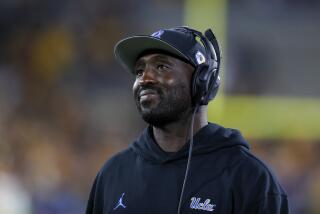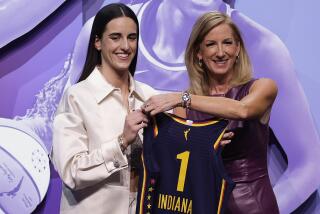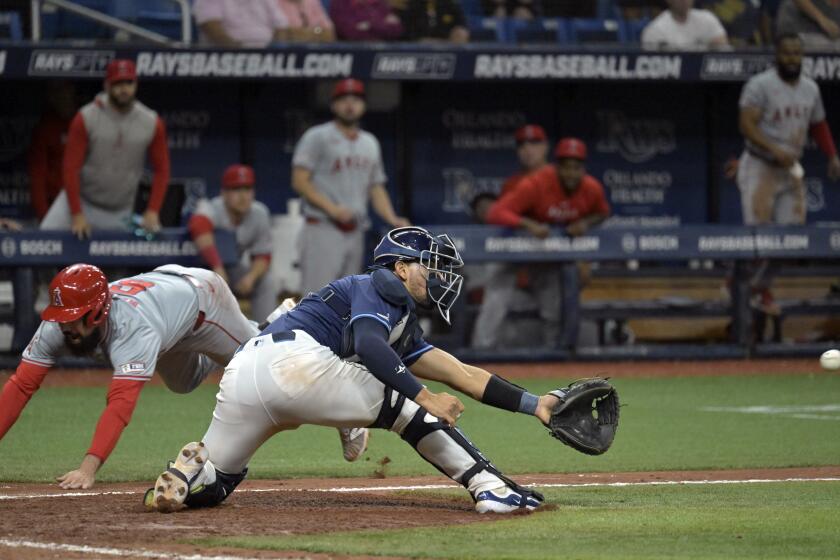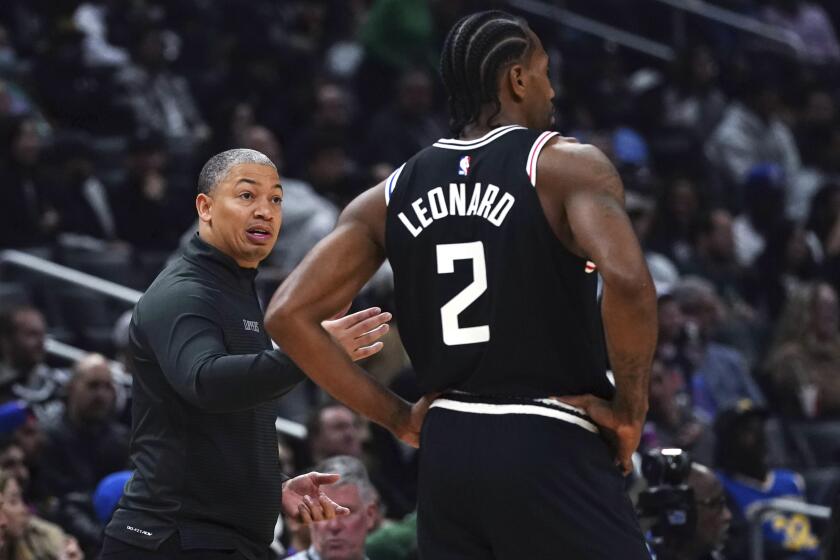At NFL combine, players’ hopes can be dashed all at once
For many NFL prospects, life begins at 40 (yards).
Covering that distance in a scorching time -- as Clemson’s Jacoby Ford did Sunday at the NFL scouting combine -- can turn the heads of potential employers, just as a slow 40 time can send a player’s draft stock into a tailspin.
According to an NFL scout who, along with dozens of others, was keeping his own stopwatch on Ford, the 5-foot-8, 182-pound receiver clocked in at hand times ranging between 4.18 and 4.23 seconds. The official (electronic) combine record is 4.24, set in 2008 by Chris Johnson, now of the Tennessee Titans.
Ford’s electronic time posted on NFL.com was 4.28. Regardless, he was blistering fast, and that’s the type of performance that could significantly elevate him in some teams’ eyes.
Among the other players who performed especially well in drills and physical tests were Oklahoma State quarterback Zac Robinson, who some felt upstaged Cincinnati’s Tony Pike (the elite quarterbacks are waiting for their campus pro days to throw), and receivers Golden Tate of Notre Dame; Taylor Price of Ohio University; Mike Williams of Syracuse; Damian Williams of USC; and Carlton Mitchell of South Florida.
Clemson’s C.J. Spiller appears to have a strong grip on the top spot among running backs, and Fresno State’s Ryan Matthews is widely regarded the second-best at that position.
The drills Monday and Tuesday, the final two days of the combine, are mostly devoted to evaluating defensive players.
Thankful to be back
USC’s Stafon Johnson spoke to reporters in his now-husky voice, not much louder than a whisper, and said he one day hopes to be regarded as simply a football player and not as someone who recovered from a near-fatal accident. His windpipe was crushed in September when the weight he was bench-pressing slipped out of his hands and the bar fell on his neck.
He said working his way to the combine when it initially appeared that his playing days were over “just shows how bad I love this game, and how much I wanted to get back and prove to everybody that injuries are not always the downfall or the end of what you want to do.”
He said scouts have asked him about the injury, but only to inquire if he thinks it will affect him as a player, which he doesn’t.
Johnson, who scored 19 touchdowns in college, is seen as a short-yardage and goal-line runner who lacks the speed of other prospects in this draft class. Pro Football Weekly ranked him as the 14th-best back heading into the combine, and he’s generally expected to be a mid- or late-round selection.
Possible OT change
The NFL is looking into tweaking its sudden-death overtime format so that a team would not be able to win with a field goal on the opening possession.
If owners approve the plan with a three-quarters vote at meetings in Orlando, Fla., this month, the format could go into effect for the upcoming postseason.
Under the proposal, first reported by Sports Illustrated’s Peter King, the club that gets the ball at the start of overtime would win on the opening possession only with a touchdown. If that team kicks a field goal, the other team would get a possession with a chance to either win with a touchdown or tie with a field goal. It the score is tied after that, it would be sudden death from that point on.
If neither team scores on its first possession, overtime would continue on a sudden-death basis.
Why would the format initially be in place only for the postseason? Because that’s often the way rule changes happen in the NFL -- on a limited basis at first.
For instance, it used to be that if the kicking team failed to recover an onside kick because the ball did not travel the required 10 yards, that team got a second chance. A lot of people didn’t think that was fair, but a proposal to scrap that rule was defeated because enough owners thought the onside kick was an exciting, fan-friendly play.
So the league’s competition committee came back with an amended rule: If a team attempted an onside kick at any time other than the last five minutes of the fourth quarter, it could have another chance if its first kick didn’t travel 10 yards. Inside of five minutes, a team got one chance. That modified rule was voted in.
After the modified rule was in place for a while, the mulligan caveat was eliminated.
That could be the case with an overtime proposal: It goes in on a limited basis, then -- assuming it’s a good rule -- eventually becomes the full-time procedure.
More to Read
Get our high school sports newsletter
Prep Rally is devoted to the SoCal high school sports experience, bringing you scores, stories and a behind-the-scenes look at what makes prep sports so popular.
You may occasionally receive promotional content from the Los Angeles Times.







